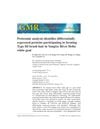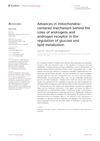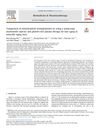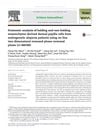Search
forLearn
1 / 1 resultsResearch
5 / 1000+ results
research Proteomic Analysis Identifies Differentially Expressed Proteins Participating in Forming Type III Brush Hair in Yangtze River Delta White Goat
Researchers found four key proteins that affect the development of a specific hair type in Yangtze River Delta white goats.

research Advances in Mitochondria-Centered Mechanism Behind the Roles of Androgens and Androgen Receptor in the Regulation of Glucose and Lipid Metabolism
Androgens and androgen receptors are important for metabolic health, affecting how the body uses glucose and fats through mitochondrial function.

research Comparison of Mitochondrial Transplantation Using a Stamp-Type Multineedle Injector and Platelet-Rich Plasma Therapy for Hair Aging in Naturally Aging Mice
Mitochondrial therapy and platelet-rich plasma therapy both stimulated hair regrowth in aging mice, with mitochondrial therapy showing similar effectiveness to plasma therapy.

research Screening and Expression Validation of Key Proteins for Secondary Hair Follicle Growth in Cashmere Goats Based on iTRAQ Quantitative Proteomics Technology
FKBP10 and FBN2 are key proteins for hair growth in cashmere goats.

research Proteomic Analysis of Balding and Non-Balding Mesenchyme-Derived Dermal Papilla Cells from Androgenetic Alopecia Patients Using Online Two-Dimensional Reversed Phase-Reversed Phase LC-MS/MS
Found different proteins in balding and non-balding cells, giving insight into hair loss causes.
Community Join
5 / 88 resultscommunity 30-Min Dermatology Visit – Best Questions to Ask About Balding? ( 175$ )
The conversation discusses hair loss treatments, focusing on finasteride, minoxidil, and other options like PRP and ketoconazole. It highlights the importance of asking specific questions during a dermatology visit to determine the cause of hair loss and appropriate treatments.
community Physio-metabolic method of treating androgenic alopecia. Cold receptors. The relationship between DHT, cold receptors, minoxidil and antiandrogens.
A method for treating androgenic alopecia using minoxidil, antiandrogens, exercise, and cold exposure to promote hair growth. Environmental factors and lifestyle changes, like diet and exercise, can improve treatment effectiveness.

community Physio-metabolic method of treating androgenic alopecia. Cold receptors. The relationship between DHT, cold receptors, minoxidil and antiandrogens
Treating androgenic alopecia with minoxidil, finasteride, and antiandrogens, alongside exercise, cryotherapy, and natural substances to stimulate cold receptors for better hair growth. The method focuses on enhancing treatment effectiveness by considering environmental and behavioral factors and the role of cold receptors and muscle stress.
community Creatine is the opposite of minoxidil !
Creatine may counteract minoxidil's hair growth effects by closing potassium ATP channels, potentially leading to hair loss in predisposed individuals. Despite anecdotal reports, there is no conclusive evidence linking creatine to hair loss.
community Il PP405 è molto promettente ma non è l'unico in grado di liberarci dalla iattura
PP405 shows promise in hair loss treatment, but stem cell therapy using adipose-derived stem cells and ATP also successfully reversed androgenetic alopecia in mice. Stem cell therapy is costly, and some doubt the effectiveness of PP405 based on press releases.